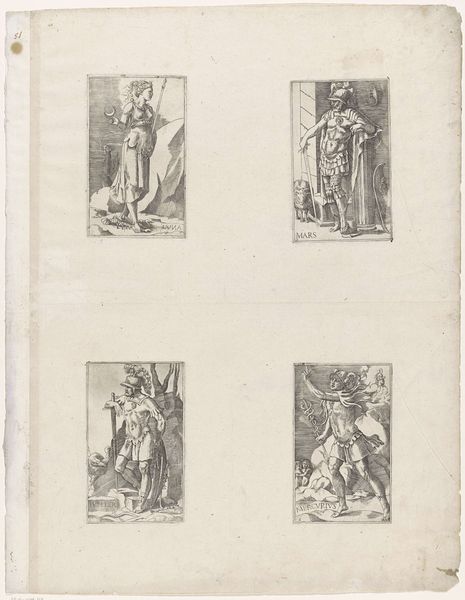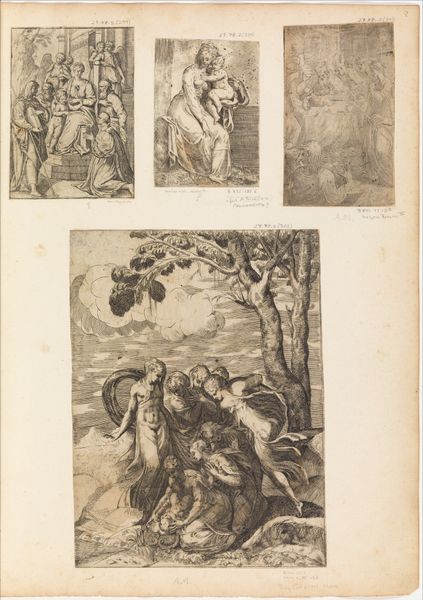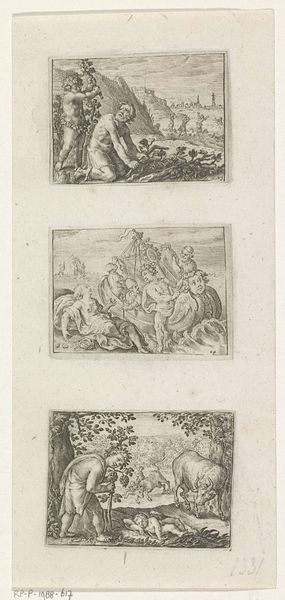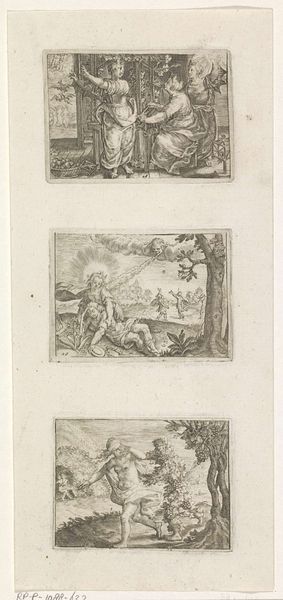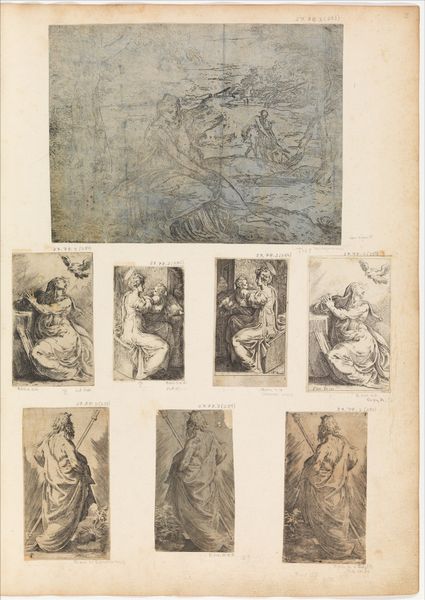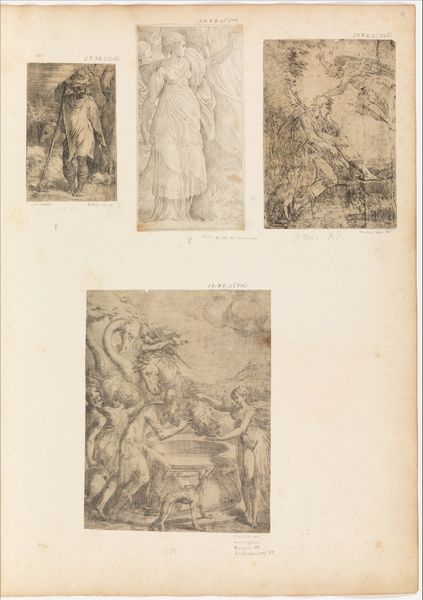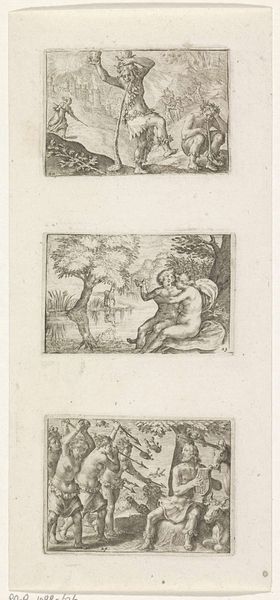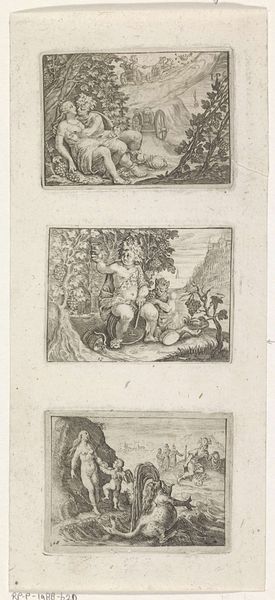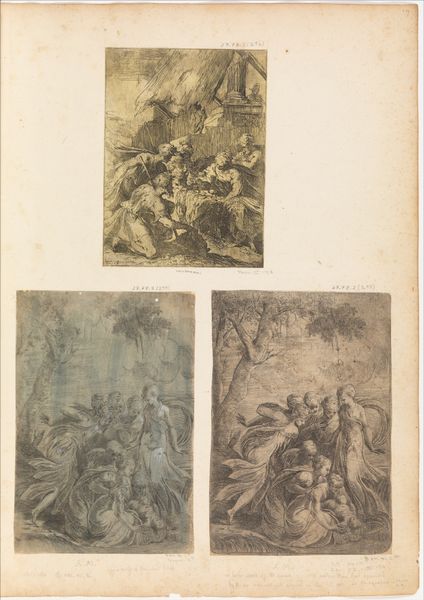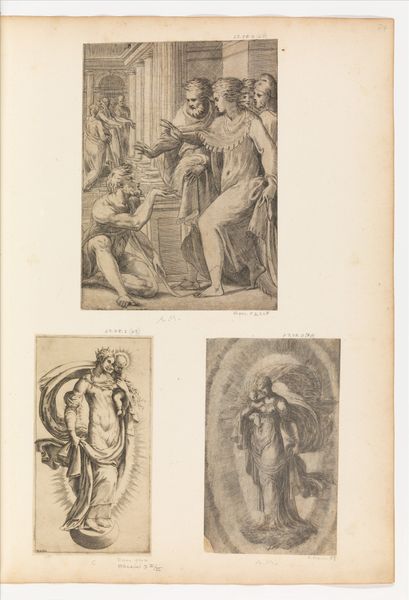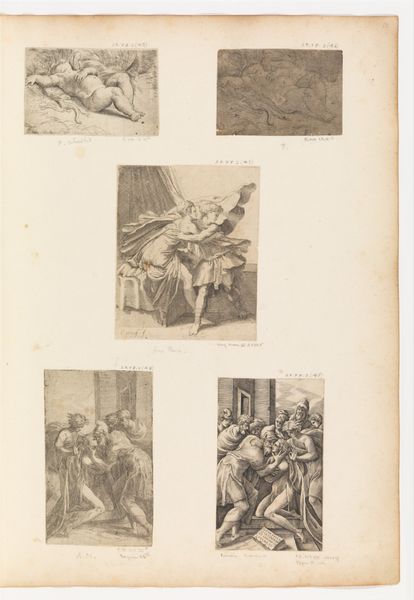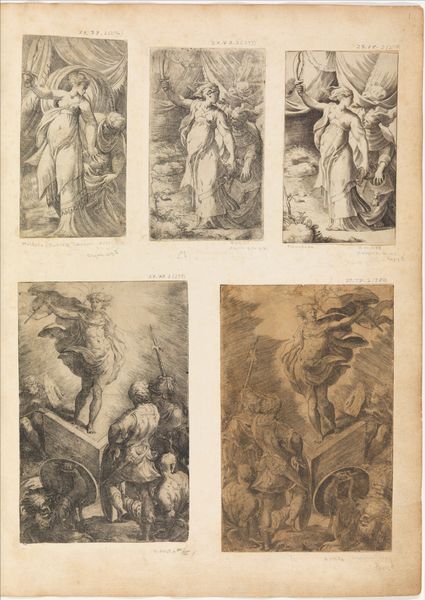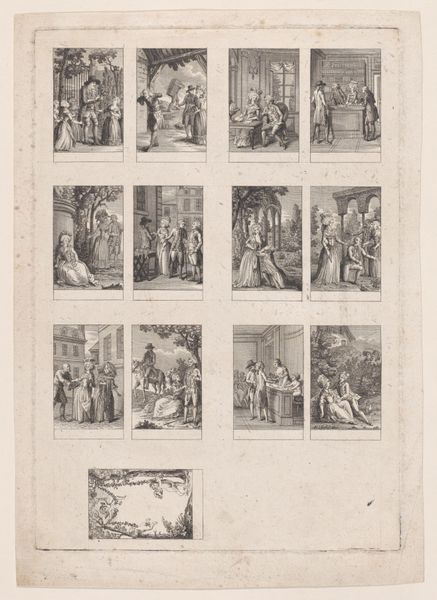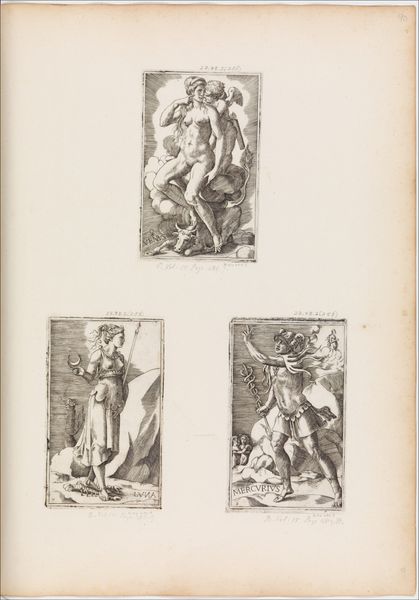
print, engraving
#
allegory
# print
#
figuration
#
11_renaissance
#
history-painting
#
italian-renaissance
#
engraving
Dimensions: height 150 mm, width 92 mm, height 150 mm, width 93 mm, height 148 mm, width 92 mm, height 155 mm, width 110 mm, height 542 mm, width 404 mm
Copyright: Rijks Museum: Open Domain
Editor: So this print, "Saturnus / Venus / Sol" by Giulio Bonasone, likely created sometime between 1508 and 1570, shows these four small scenes. They look like vignettes from classical mythology. They seem... I don’t know, almost like playing cards. What catches your eye when you look at this work? Curator: Well, the way Bonasone presents these deities is fascinating, especially considering the rise of printmaking during the Renaissance. Each image functions as its own statement but consider the act of distribution itself. Prints like these allowed for the wide dissemination of classical iconography beyond elite circles. Did this accessibility shift the cultural understanding of these figures? Editor: That's a good point. How would the common person during the Renaissance have viewed this? Curator: The accessibility definitely shaped and democratized classical themes, as these deities previously resided primarily within the intellectual and artistic confines of the elite. Each citizen has now a way to own such prints. Did this new context allow for interpretations, ones diverging from established allegorical meanings? This print isn’t just about art; it reflects social change through cultural democratization. Editor: It’s interesting how one image can carry all that. So, you're saying it wasn't just about displaying artistry but actively influencing broader social interpretations through wider availability? Curator: Exactly! It raises questions about how these visual representations became tools for shaping cultural consciousness during a period of massive socio-political and religious upheaval. The very act of making and distributing this art becomes a political act, shaping the collective imagination. Editor: I see. The ability to reproduce and distribute these images, I guess, really changes how the public engaged with the imagery. Thanks, that’s given me a lot to consider! Curator: And that wider public engagement itself became a really powerful part of what the Renaissance was all about.
Comments
No comments
Be the first to comment and join the conversation on the ultimate creative platform.
